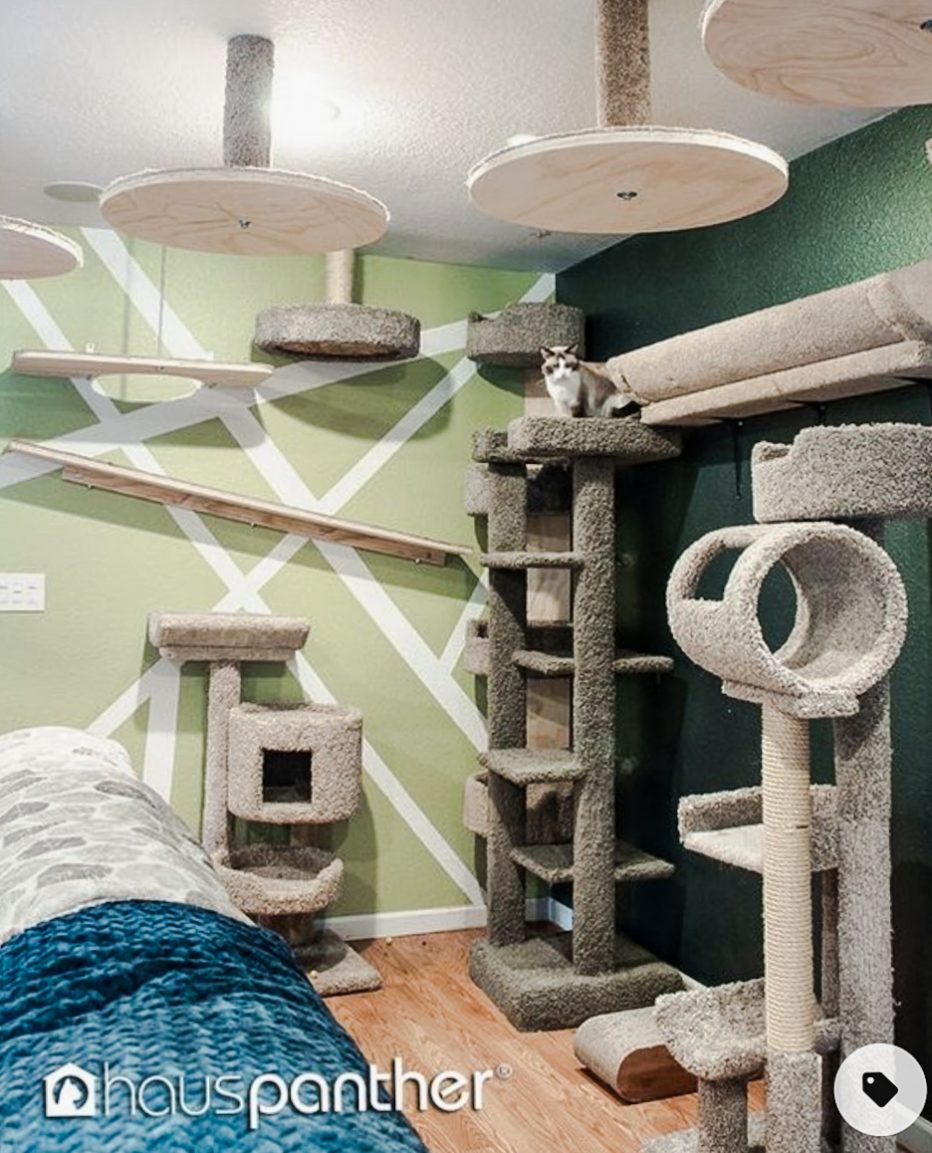The title comes from a study dated 1997 of around 1200 cats living indoors full-time.
Many more domestic cats are full-time indoor cats today, 2023, then there were 20 years ago. There is a trend towards keeping domestic cat indoors full-time.
The domestic cat, it is said, is barely domesticated. They retain, underneath the surface, their wild cat behaviours. This includes the size of their home range and all the other behaviours to do with a solitary, predatory lifestyle.
 |
| Full-time indoor cat superhighway. An important aspect of creating a good indoor environment. Image in public domain. |
In 1997, a study assessed the behaviour of just under 1200 full-time indoor cats owned by 550 owners. A total of 65% of the cats were standard random-bred cats described as "domestic European shorthairs".
Just under 80% were sterilized animals. Comment: this is a quite a high percentage of unsterilised domestic cats which may have had an effect on the conclusions because unsterilised gets retain more of their wild cat inherited behaviours all of which will be unwanted by a human.
87 percent of the owners were female and 59% of the household had more than one cat with an average of 2.2 cats per household.
On average, an individual cat used 34 m² of living space and had five different resting places.
 |
| Cat walks. Important for full-time indoor cats. Image in public domain. |
Importantly, the owner's bed was the favourite resting place in 52% of the cases. Comment: this is because the owner's bed carries the most body odour of any other area in the home. And body odour is very important to domestic cats. It's also why sometimes domestic cats defecate on their owner's bed when they are stressed. They want to merge their scent in their faeces with the scent of their owner to reassure themselves.
RELATED: Every full-time indoor cat should have a window box (at least).
55% of the owners let the cat out under various levels of control. 79% fed their cats in the kitchen and 24% of the cats had communal food bowls.
A total of 51% of the cats had to share their cat toilet. Comment: this is a very bad policy. Jackson Galaxy, the well-known American cat behaviourist advises that there should be one cat litter per cat plus one extra.
You do not want resource guarding behaviour by a dominant cat over a subservient cat which might take place if there isn't enough litter trays. And to share food bowls will help promote the same problem.
22% of the cat were fed in the same room as their toilet. That means that one-fifth of cases the food bowl was in the same room as the litter tray which is also a very bad idea.
The picture painted by the study is that the owners were not doing a great job looking after their full-time indoor cats. This is probably why in 54.7% of the households the owners complained of one or more behavioural problems with their cats.
The owners were given self-assessment questionnaires. The most often mentioned cat behaviour problems were:
- A state of anxiety in 16.7% of the cats,
- 15.2% of the cat scratched furniture,
- Feeding problems accounted for 10.9% of complaints,
- 10.5% of cat owners complained about cat aggression
- 8.2% of the owners complained about inappropriate urination and urine spraying
- And defecation in the home was a problem in 5.2% of the cases.
They concluded that neutered females exhibited problems most often. Owners with children complained more often about cat behaviour. Comment: probably because the kids were mishandling the cats and getting scratched and the cats were getting stressed.
When the owner spent more time interacting with their cat i.e. for several hours spread over the day they mentioned problems less often.
Cat owners spent less effort trying to resolve cat anxiety problems and scratching furniture problems than other problems.
In many cases the owners were unable to solve the problems on their own
The overall conclusion was that "there are deficiencies in indoor cat housing and that owners need help to correct them."
RELATED: The big flaw that is never admitted in keeping cats indoors full-time.
I have said it before; with the trend for full-time indoor cats not enough is being done in parallel with this to ensure that the environment is adequate as a good substitute for the indoor/outdoor environment. This is going to cause behavioural problems. This may in turn lead to an increase in cats being abandoned to shelters or simply dumped.
Study: Housing conditions and behavioural problems of indoor cats as assessed by their owners. Link: https://doi.org/10.1016/S0168-1591(96)01134-3

No comments:
Post a Comment
Your comments are always welcome.